What is a grassland? | Types of grasslands | Where are grasslands? | What lives in a grassland? | What threatens a grassland? | What can we do? | Resources
Grasslands
Canada's grasslands:
- Are a critically important habitat for Canadian wildlife
- Are only 1/4 of their original size
- Are home to hundreds of mammals, birds, amphibians, and plant species, many of which can't exist in any other type of habitat
- Are the subject of many fascinating and extensive conservation efforts
What is a grassland?
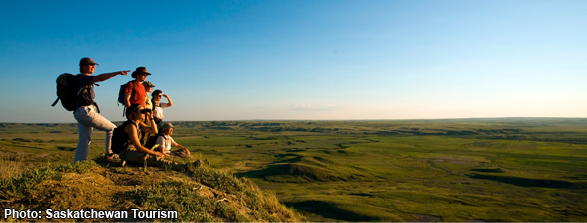
Grasslands are amazing, mind-bending places that support an incredible diversity of life—but they may not appear that way at first. Take a look at the photograph above. Before Western settlement, Plains Indians and Métis looked across this landscape and saw the potential for hunting bison for food, fuel, and fur. In the nineteenth Century, settlers arrived at the prairie grasslands, once considered the Final Frontier of the Canadian West, and saw rich, vast ranchland for grazing cattle, and fertile soil for plowing and planting crops.
With less than ¼ of the Canada’s original grassland habitat remaining, what do we see in it now?
We see a Ferruginous hawk swoop down to capture a Richardson’s ground squirrel; we see expansive river valleys that dwarf the human form; we see a rattlesnake glide past a prickly pear cactus and a herd of bison grazing on feathery blue grama grass.
In short, we’ve come to see the grassland as a resilient, critically important ecosystem that supports hundreds of specially-adapted plant, mammal, bird, and reptile species that can’t be found anywhere else in the world. Fascinating predator-prey relationships, specially-adapted grasses and rare flowering plants, glacial formations that fascinate geologists—these are just a few of the elements that characterize Canada’s grasslands, one of our most important, and most threatened, natural spaces.
Types of grasslands
Tropical Savannah and Temperate Grassland are largely distinguished by differences in temperature and rainfall, both critical elements to a grassland’s formation. An area that receives very little rain becomes a desert; an area that receives significant amounts of rain often develops into forest. Grasslands hang somewhere in the balance.
Tropical Sannavahs, found in Africa, Australia, South America, and Indonesia, stay warm all year. They receive 50 to 130 centimetres during the rainy season (6 to 8 months), and endure drought for the remainder of the year. Plant and animal species vary greatly across the Savannah, curbed by differences in climate, but much of the Savannah is characterized by thin soil where only grasses and flowering plants can grow. Like Canada’s grasslands, this ecosystem supports an astonishing diversity of species; the African savanna, for example, is home to some of the world’s most iconic mammals, including giraffes, zebras, and lions.
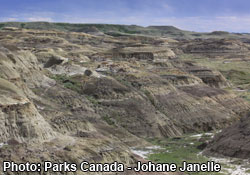
Temperate Grasslands, which include Canadian grassland ecosystems, are also found around the globe. Plant and animal species in temperate grasslands are shaped by less rainfall (25 to 90 centimetres), and cycle through a greater range of seasonal temperatures. Many temperate grassland animals, which must adapt to dry, windy conditions, are recognizable to Canadians: grazing species like antelope and elk; burrowing animals like prairie dogs and badgers; and predators like snakes and coyotes. For more information on the plants, birds, and animals that call Canada’s grasslands home, see “What lives in a grassland?”, below.
The dramatic contours of Canada’s grasslands are the result of glacial movement and melting ice, which shaped this landscape over the last two hundred million years. Grasslands National Park, for example, boasts glacial meltwater channels that feature plateaus, coulees, buttes that rise abruptly at the horizon, and layers of rock formation that hold fossilized secrets from 80 million years ago.
Left: Badlands in the East Block portion of Grasslands National Park, Sask.
Where are grasslands?
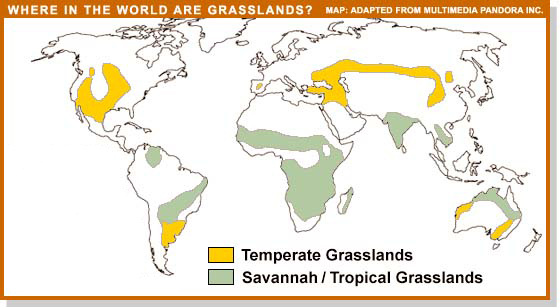
(Map: Grasslands Conservation Council of British Columbia)
High seasonal temperatures and little rainfall provide the perfect formula for grassland habitats, which once covered up to 25% of the earth’s surface before human activity and conversion to cropland interfered.
In North America, grassland ecosystems are found largely in the Great Plains, which begin in the Gulf of Mexico, cut a swathe through the United States, and end in Canada’s prairie provinces (Alberta, Saskatchewan, and Manitoba). Smaller pockets of grassland ecosystems are also scattered through southern Ontario and the dry eastern side of British Columbia’s north-south mountain ranges, each with their own unique biodiversity. Today, only ¼ of Canada’s original grasslands still exist. Significant parts of it are formally protected, as in the case of Grasslands National Park, Saskatchewan.
What lives in a grassland?
Grasslands are home to hundreds of native plant and animal species in Canada—that’s an incredible diversity of life, all sharing a very complex ecosystem with particular challenges and rewards. Mammals, insects, birds, reptiles, and plants all co-exist in a balance that astonishes the imagination. Because such a small portion of Canada’s original grasslands remain today, many of these species are under significant threat.
Below are just a few examples chosen from Canada’s immense grassland biodiversity.
Mammals
Black-tailed prairie dog
The highly social black-tailed prairie dogs are considered a species of “Special Concern” in Canada because of their restricted distribution (today, they only exist in the lower Frenchman River Valley in Saskatchewan). Not only are black-tailed prairie dogs an important food staple for a variery of predators, but their abandoned burrows shelter many grassland species, including the endangered burrowing owl and black-footed ferret. Persecution by farmers, disease, and significant habitat loss have decreased the black-tailed prairie dog’s population to a fraction of its original size; in an example of crucial co-dependency, this population decline is in turn largely responsible for the near-extinction of the black-footed ferret.
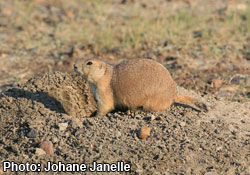
Plains bison
Two hundred years ago, anywhere from 30 to 70 million bison roamed across North America, grazing on native grasses and providing food, clothing, and even shelter for Plains Indians, who built their teepees from buffalo hide. Within the span of a few decades late in the 19th-Century, habitat loss and European trophy hunters drove bison to the edge of extinction. Reintroduction efforts, including 2005’s release of 71 plains bison to Grasslands National Park, are gradually restoring this impressive mammal to its natural habitat. To learn more, visit the bison fact sheet.
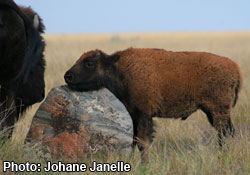
Pronghorn antelope
The pronghorn antelope can run up to 100 kilometers an hour and is one of the fastest mammals in the world, second only to the cheetah. This speed reveals it as a true master of the North American grassland—the only place in the world where it exists, giving us another important reason to preserve this habitat.
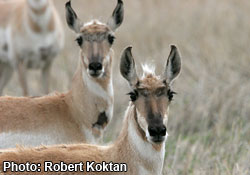
Black-footed ferret
The exquisitely cute black-footed ferret, which relies almost exclusively on the black-tailed prairie dog for food and shelter, is the only ferret species indigenous to North America—and it was very nearly lost to us forever. Until a Wyoming farmer’s dog discovered a small colony in 1981, researchers feared that habitat loss and rapidly declining food sources had pushed this species into complete extinction. From the Wyoming colony, captive populations were gradually developed in facilities across North America. In 2009, the first 34 black-footed ferrets to live on the Canadian prairies in 70 years were released into the wild at Grasslands National Park. Visit the black-footed ferret fact sheet to learn more.
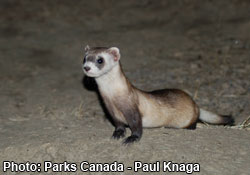
Swift fox
Swift foxes are a clear example of the unique adaptations undergone by grassland species to suit their habitat: unlike nearly every other fox species, swift foxes use dens throughout the entire year—both as a place to raise their young, and as shelter from predators in a landscape with few other places to hide. Swift foxes have been clocked at more than 60 kilometers per hour, a speed which helps them reach shelter quickly in moments of danger. Swift foxes vanished from the Canadian prairies during the 20th-century, mostly due to over-hunting coupled with severe winters and droughts. Reintroduction programs have gradually helped to reverse this trend, though today the species remains “threatened” in Canada. Visit the swift fox fact sheet to learn more.
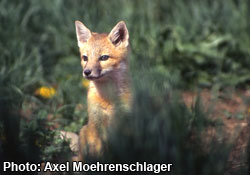
Reptiles and amphibians
Prairie rattlesnake
The prairie rattlesnake, whose name comes from rings on its tail which knock together when agitated, is the only venomous snake on the Canadian prairies. Using its tongue as a smell- and heat-sensing membrane, it can detect prey (mostly small mammals and amphibians) from 30 meters away. Because it is cold-blooded, the prairie rattlesnake must hibernate in caves and abandoned mammal burrows to survive the grassland’s cold winters—another example of complex co-dependency between grassland species.
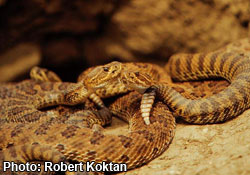
Birds
Burrowing owl
The burrowing owl, a small, sturdy bird which, unlike most other owl species, nests in abandoned underground burrows and mimics the hiss of a rattlesnake for protection, is one of the most endangered birds in western Canada. To learn more, visit the burrowing owl fact sheet.
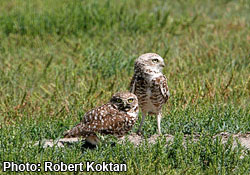
Ferruginous hawk
This handsome bird, North America’s largest hawk, is a great help to landowners: during nesting season, a breeding pair can devour almost 500 small mammals, including ground squirrels and prairie dogs. Habitat loss and declining food sources have put this hawk on Canada’s “threatened” list, though human-made artificial nesting structures and other protective measures are helping protect its remaining population.
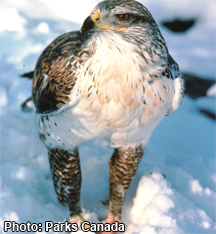
Long-billed curlew
The long-billed curlew, a migratory bird that winters in Mexico and returns to the North American plains during breeding season, is our continent’s largest shorebird. Their extremely long, down-curved bill is well adapted to a prairie diet of invertebrates, such as grasshoppers and earthworms. Habitat loss and a disproportionate increase in predators are contributing to a decline in the long-billed curlew’s population; it is now considered a species of “Special Concern” in Canada.
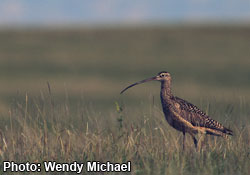
McCown’s longspur
After returning each spring from their southern wintering grounds, this sparrow-sized migratory bird relies on North America’s grassland prairie as a breeding habitat. Human land use and fire suppression (a relatively modern threat to grassland habitats, whereby human intervention in wildfire incidents results in forest encrachment – see “What threatens a grassland?”, below) have reduced this bird’s habitat. Nonetheless, they are detected in higher numbers in Alberta’s southern grasslands, where continuous grazing by large mammals helps maintain ideal conditions for this and other birds.
Insects
Mormon metalmark butterfly
This striking grassland insect relies on the branched umbrella-plant both as a critical food source and as a host for laying eggs. There are two known populations of this butterfly in Canada. The southern mountain population, found only in the southern interior of British Columbia, is an endangered species, with only about 100 individuals remaining. The prairie population, listed as a threatened species, has not been thoroughly studied, though researchers estimate that anywhere from 200 to 1000 individuals remain. Habitat loss and agriculture threaten the umbrella plant, listed as a species of “Special Concern,” which in turn compromises metalmark populations.
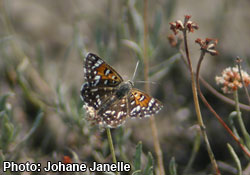
Plants
Blue grama grass
It’s amusing to note that the whimsical-looking blue gamma grass, shaped like a tufted toothbrush, is the historical favourite of the enormous bison. Not only is it one of the most palatable grasses available to grazing animals, it is also a small but mighty element in grassland restoration. Considered one of the most drought-resistant grassland species, it has been used to re-vegetate disturbed or dry parts of the central Great Plains.
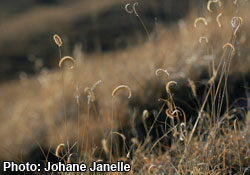
What threatens a grassland?
Grasslands are among the most endangered ecosystems in the world, and Canadian grasslands, which cover less than ¼ of their original area, are no exception. Threats include urban and agricultural development, expanding forests, and invasive species which crowd out native grassland plants. At the heart of each threat are the greatest dangers for grassland species: the destruction, degradation, and fragmentation of grassland habitat.
Urban and agricultural development
Expanding towns and cities in the Canadian prairies compromise grassland habitat, particularly because many species, like the threatened Ferruginous hawk, will abandon wild areas that are too close to human settlement.
Agriculture can destroy or limit grassland biodiversity. Pesticide use and the planting of food crops are especially potent threats to native grasses. Once the grassland is broken by the plough, the protective grass, moss and lichen groundcover disappears, leaving fertile soil vulnerable to the strong prairie wind. As a result, restoring a grassland habitat that has been developed for agriculture is a long, difficult process that requires resilient plant species and a nearby renewable seed source.
Before the Homesteading Act of 1908, which closed the open range to domestic grazing, farmers’ cattle, horses and sheep moved freely across the prairie grassland, resulting in overgrazed stretches of land. Overgrazing means repeated, heavy foraging, which continues year after year until the native plant community is severely depleted and the soil begins to erode. Today, ranchers recognize this danger and are generally careful to rotate their livestock across different grazing sites, giving native plants the time and shelter to recover.
Historically, hunting and poaching have also significantly disrupted grassland ecosystems. Early agricultural settlers in Canada’s prairie provinces, frustrated by “pest” species like coyotes and black-tailed prairie dogs, resorted to poisoning and unchecked hunting practices. As a result, predators who relied on those species lost a crucial food source and began disappearing, as well. The domino effect of this widespread disturbance to the natural food web is still widely felt today, despite reintroduction efforts and strict hunting policies.
Encroaching Forests
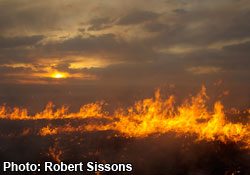
Grasslands are increasingly threatened by areas where trees have managed to take root and grow. There are both human and natural causes for this phenomenon, which reduces important grassland surface area. Livestock grazing, for example, can disturb the healthy grass systems, compromising plants and offering opportunities for trees to germinate.
Wildfires are also an issue. Ignited naturally by a lightning strike or artificially by humans, fires add valuable nutrients to grassland soil and help chase back encroaching forests. Over the past seventy years, far fewer grassland fires have resulted in more opportunity for forests to expand into grassland territory; grazing is also a possible cause for this issue, because over-grazed grassland provides very little fuel to burn and prevents important fires from spreading as they otherwise would.
Invasive species
A significant threat to remaining grassland ecosystems is the widespread introduction of non-native plants, which often have no natural predators to reduce their population and can out-compete native plants for moisture and nutrients. As a result, these alien species are a significant threat to grassland biodiversity, and are often difficult or impossible to remove once they’re established.
These alien species first appeared in Canada’s grasslands as early as the mid-19th century, when European settlers began importing seeds, deliberately or not. Relatively recent trends in grassland recreation, such as camping, hiking, and motorized vehicles, also contribute to the inadvertent spread of invasive seeds.
What can we do?
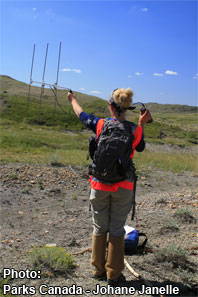
Fortunately, researchers, citizens, policy makers, and environmental management teams are collaborating to preserve what’s left of Canada’s grasslands. Across the country, in all strata of society—from ranchers to campers to government officials—Canadians have a far better understanding today than ever before of the need for balance between human activity and fragile ecosystems.
Research and knowledge are the most important tools in preserving and expanding what’s left of Canada’s grasslands. Often, a black-and-white solution to some of the greatest problems facing grassland ecosystems is simply unrealistic, and scientists must constantly experiment and adapt in order to tweak conservation strategies. Improved understanding of the role of grazing in conserving biodiversity, for example, has led researchers to believe that some grazing is in fact important in the maintenance of a healthy ecosystem; as a result, Grasslands National Park is gradually re-introducing domestic cattle to nine parcels of land in a effort to restore the “natural disturbances” that balance life in a grassland ecosystem.
Other approaches to grassland conservation involve prescribed fires, which, under very specific circumstances and within set boundaries, remove tree encroachment, enrich the soil, and improve conditions for grazing wildlife. Though prescribed fire has a long history in grasslands, including First Nations people who used fire to improve berry crops and 19th-century ranchers seeking to enlarge their grazing pasture, the effect is not yet entirely understood.
The reintroduction of nearly extinct species, like the bison and the black-footed ferret, has also made small inroads into the gradual restoration of grassland biodiversity. In the case of the black-footed ferret, the first kits to be born in the wild in seventy years were observed in the summer of 2010, a significant achievement for this species that had all but vanished from the world just a short time ago. To learn more, visit the fact sheet.
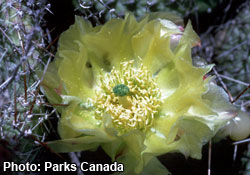
A prickly pear cactus in Grasslands National Park, Sask.
There are also small but significant steps that private individuals can follow to help restore and preserve Canada’s remaining grasslands, as well as other critical habitats. These are just a few suggestions for encouraging a healthy habitat, no matter where you live in Canada:
- Do not cultivate or develop remaining parcels of native prairie
- Turn unused farmland into grassland habitat by planting native wild grass and wild flowers. Pull out invasive trees and plant species in grassland areas, and always garden with native seeds.
- Use alternatives to pesticides.
- Build a home for a threatened Ferruginous Hawk.
- When visiting a grassland, always keep your vehicle on the road or on designated pull-offs.
Resources
Species at Risk Public Registry
© Her Majesty the Queen in Right of Canada, represented by the Minister of the Environment, 2010. All rights reserved.
Text: Megan Findlay, 2010.
Revision: Robert Sissons (Wildlife Specialist, Grasslands National Park), Pat Fargey (Species at Risk/Ecosystem Management Specialist, Grasslands National Park), and Johane Janelle (Communications Services Officer, Grasslands National Park), 2010.
Photos: Special thanks to Parks Canada, Bob Gurr, Greg Huszar, Johane Janelle, Paul Knaga, Robert Koktan, Wendy Michael, Axel Moehrenschlager, Robert Sissons, Saskatchewan Tourism, and the Calgary Zoo.
![]()









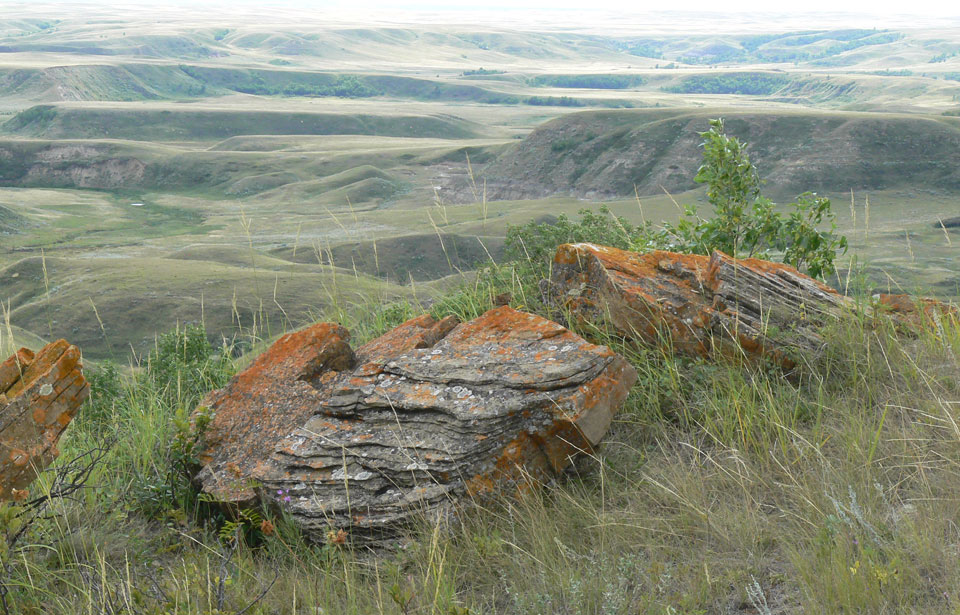
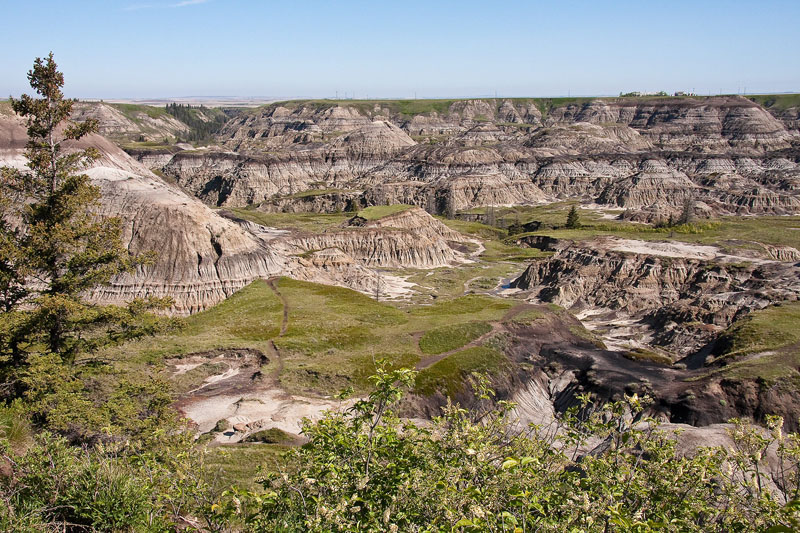
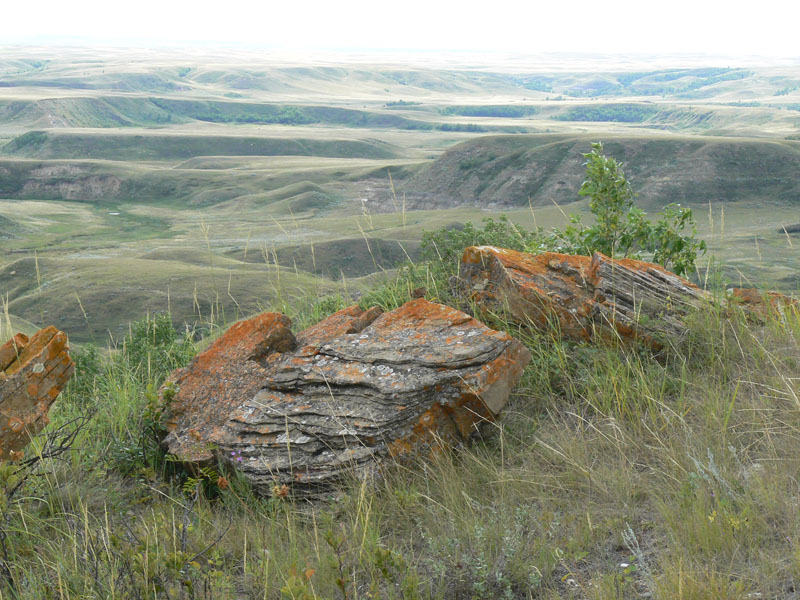
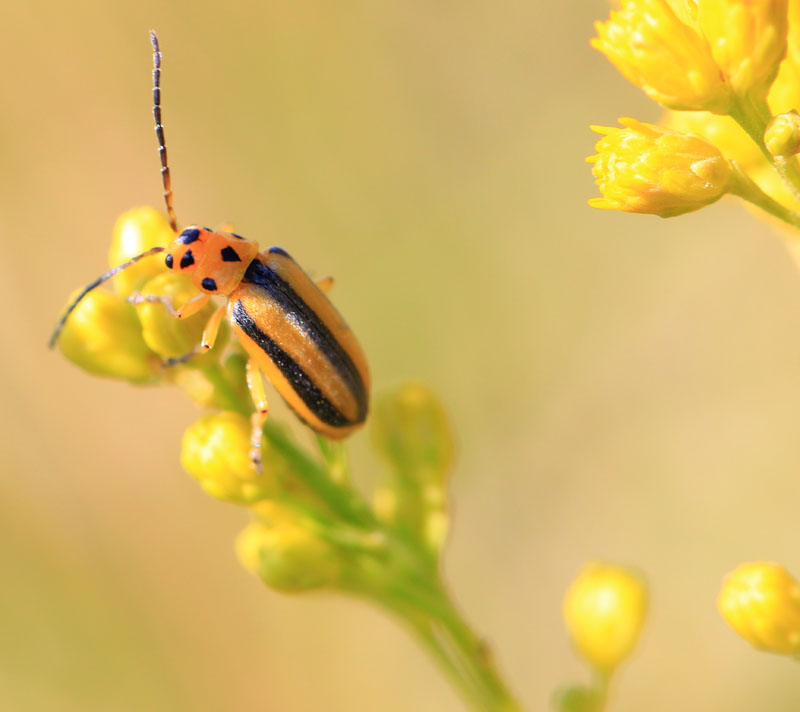
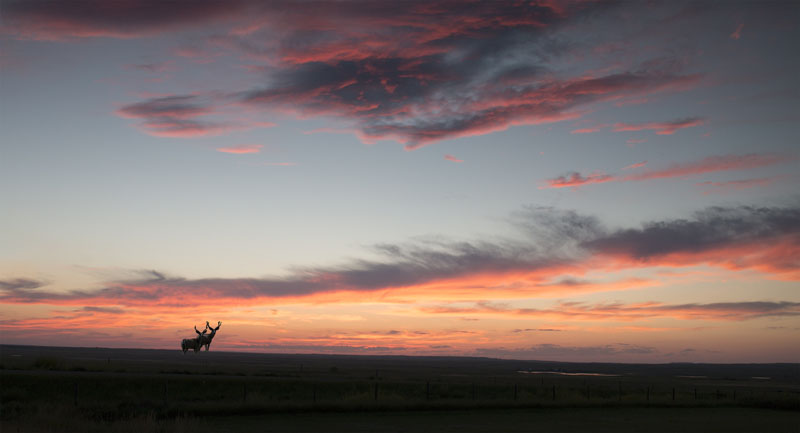
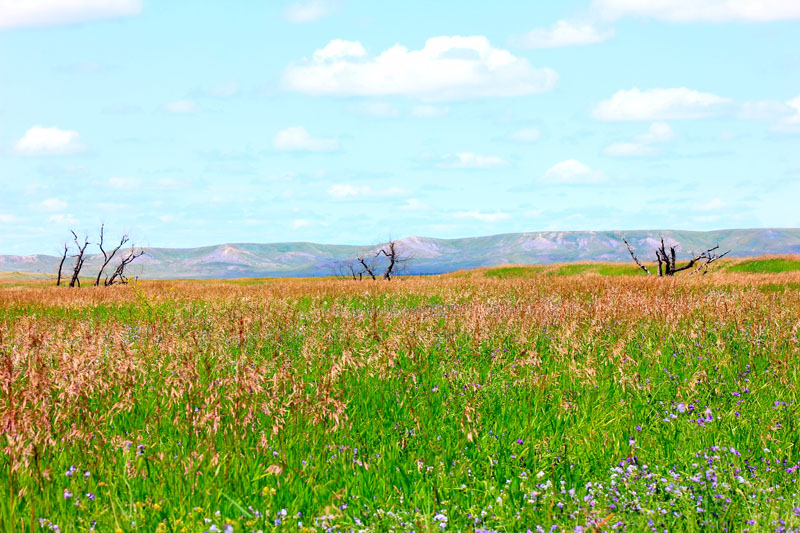
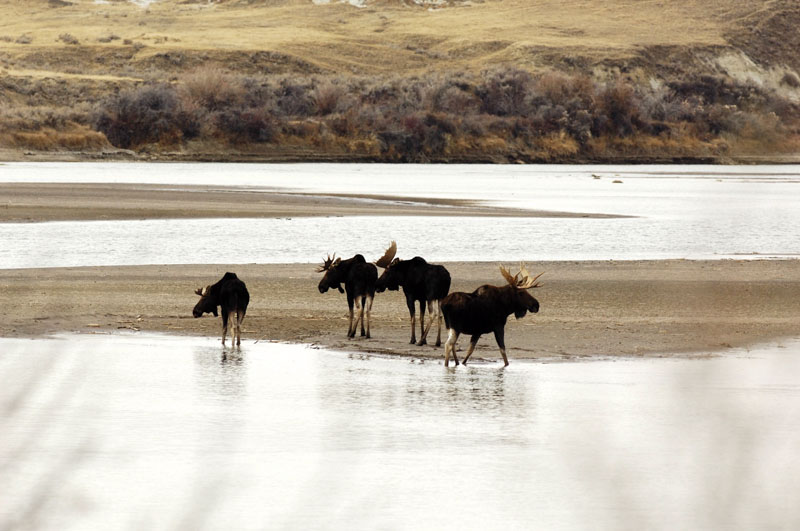
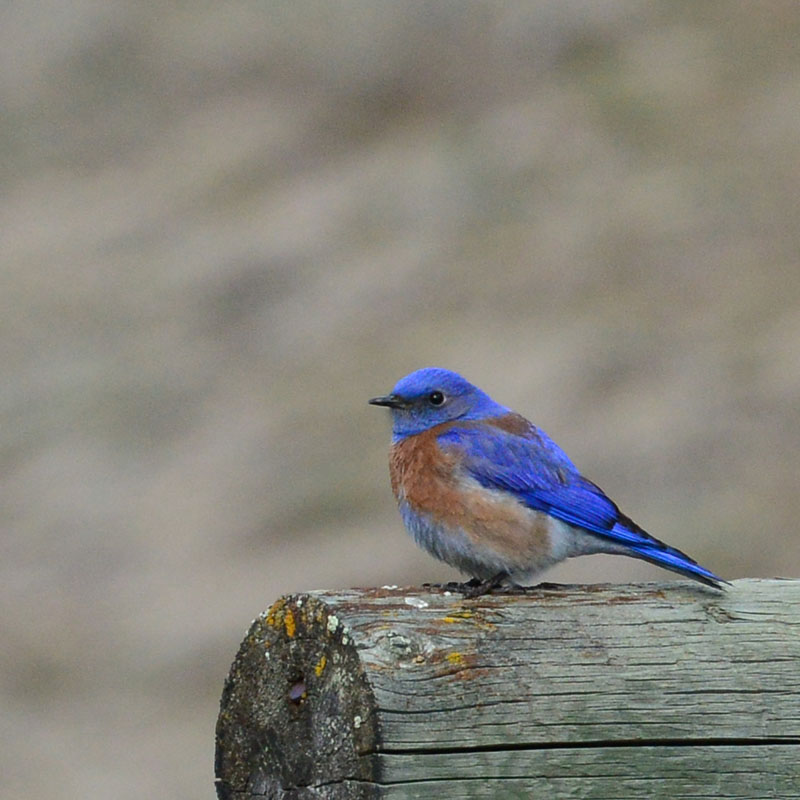
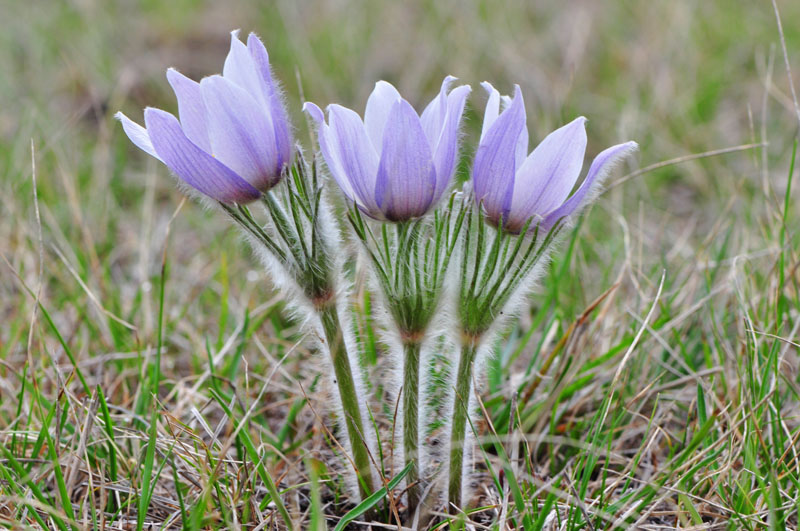
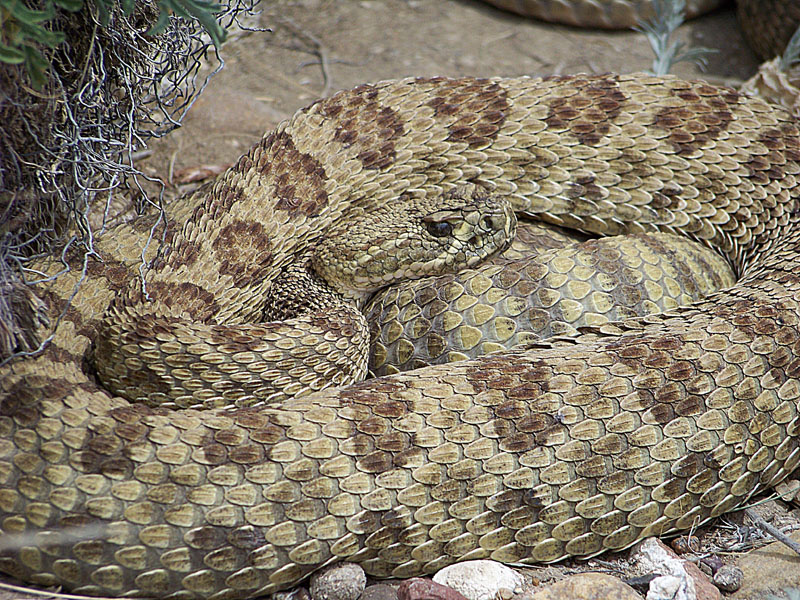
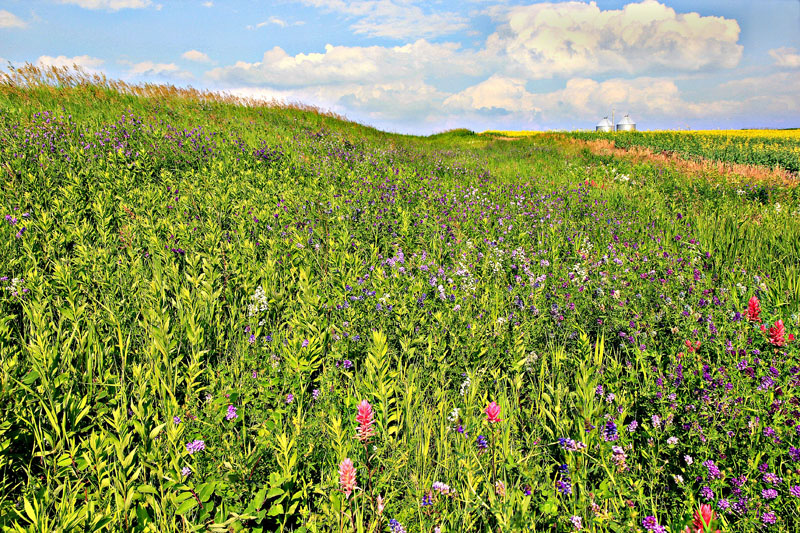
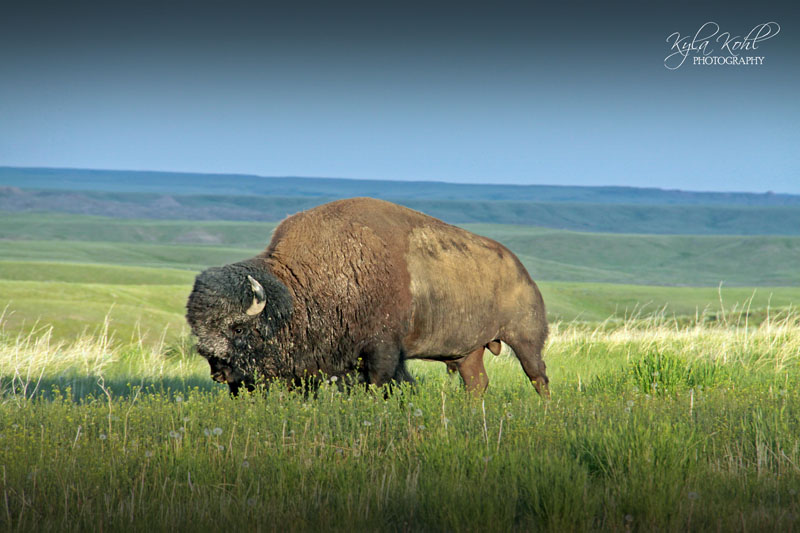
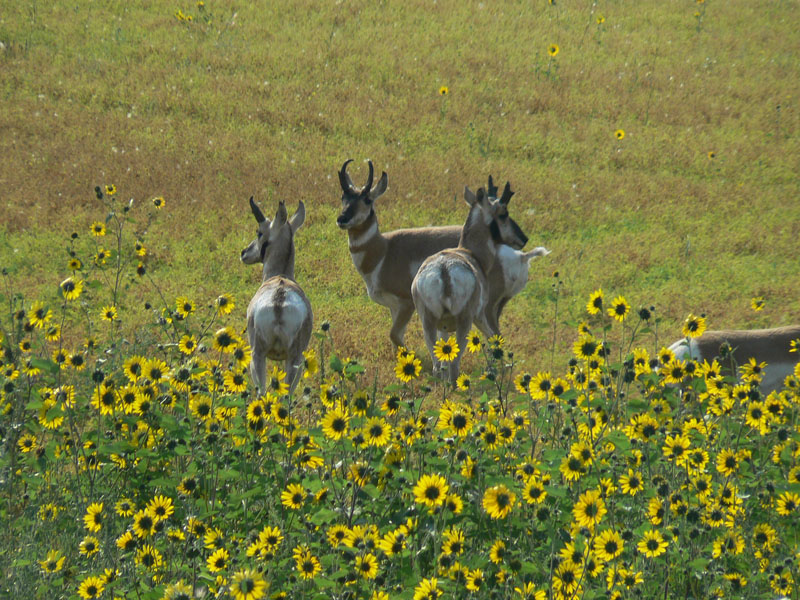
 Video & Sound
Video & Sound Back To Top
Back To Top
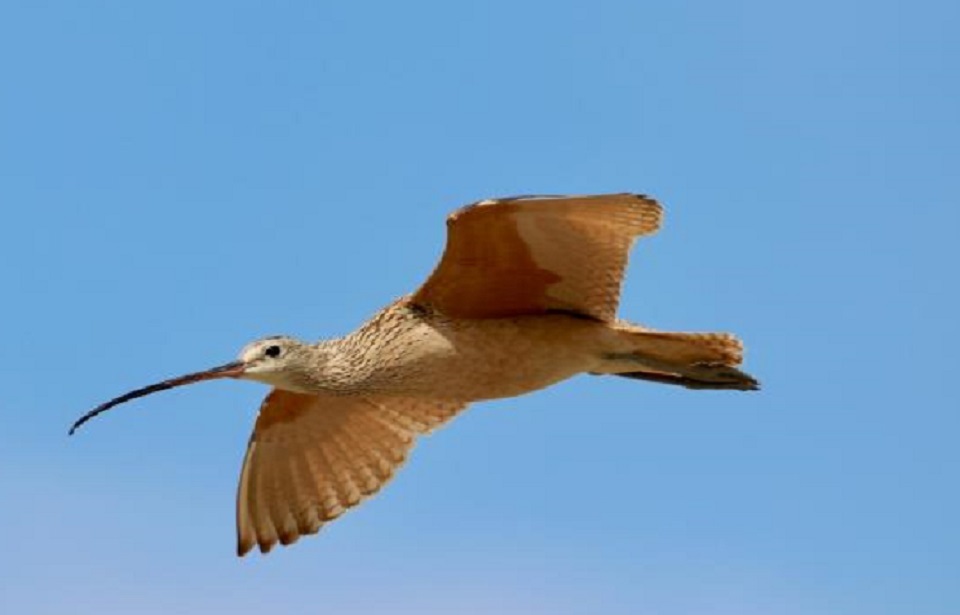

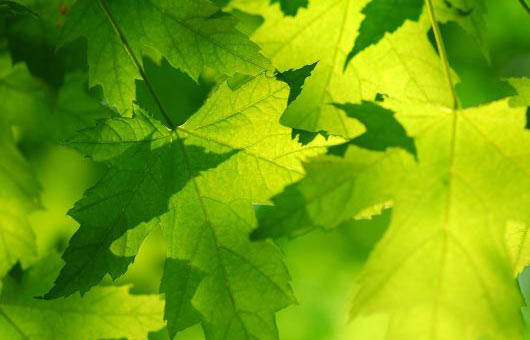
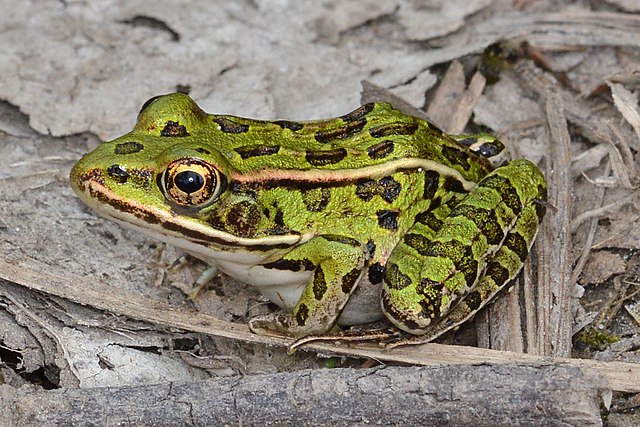
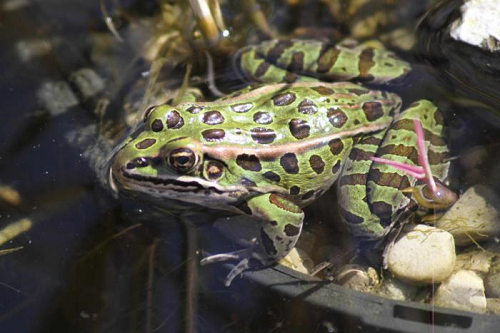
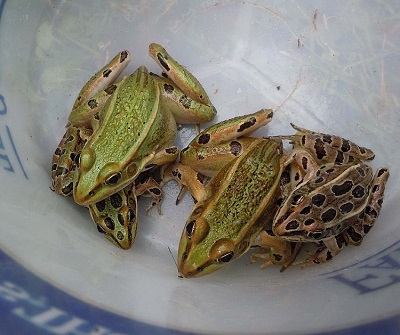
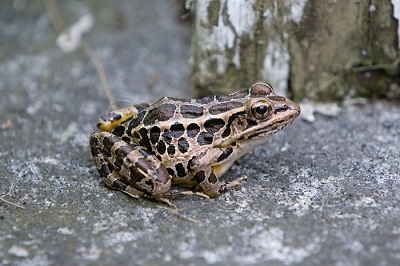

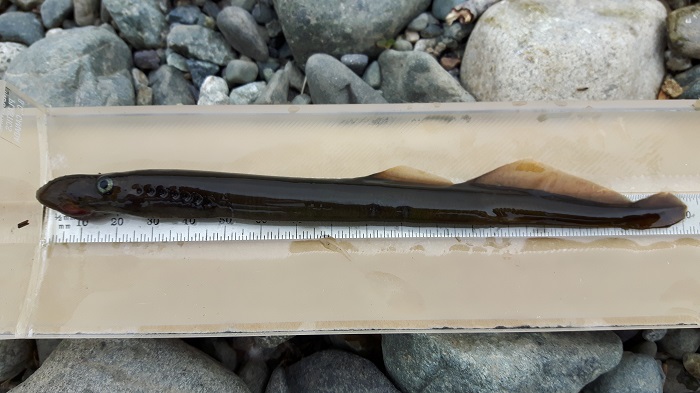
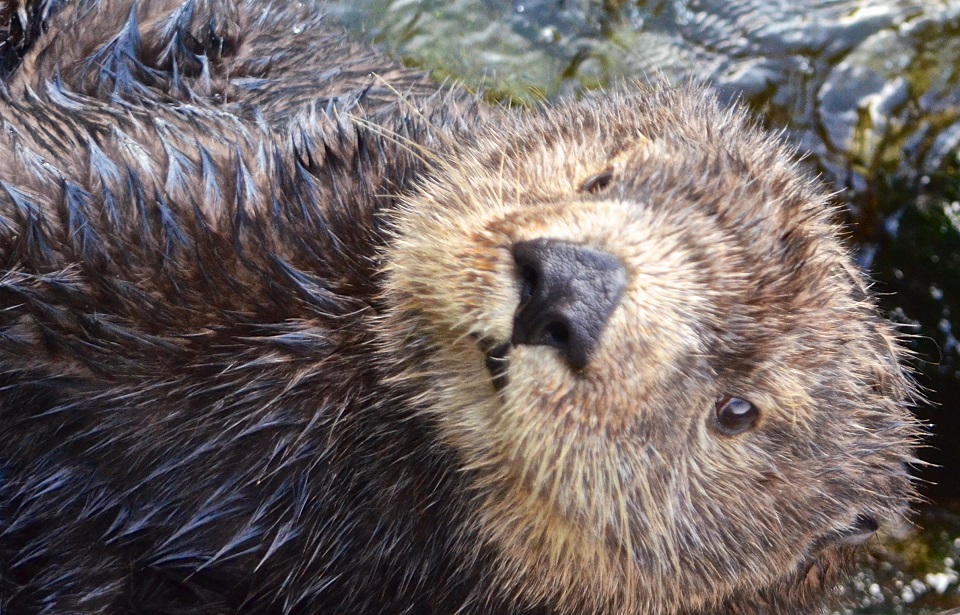
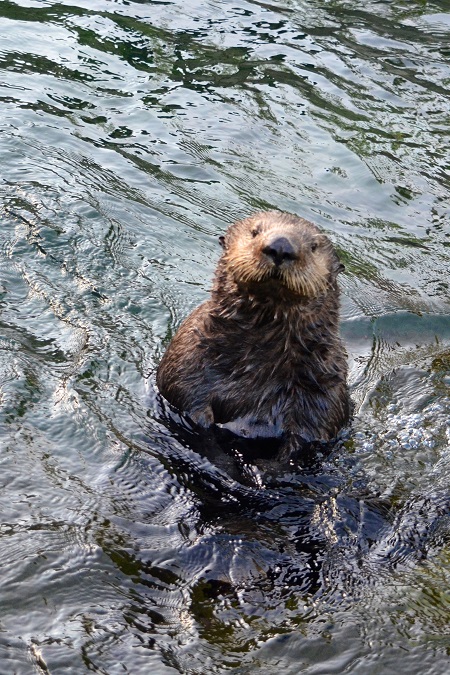
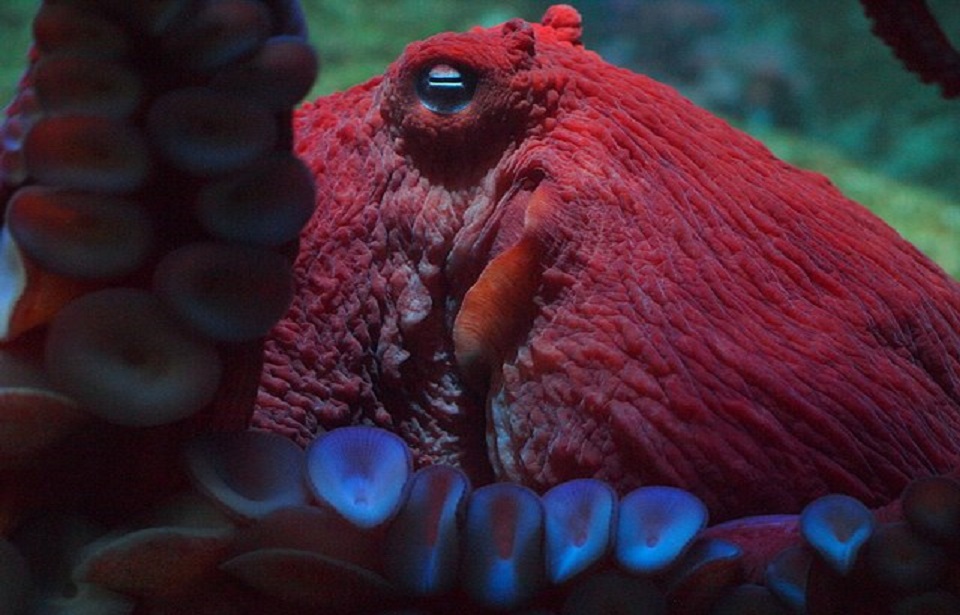
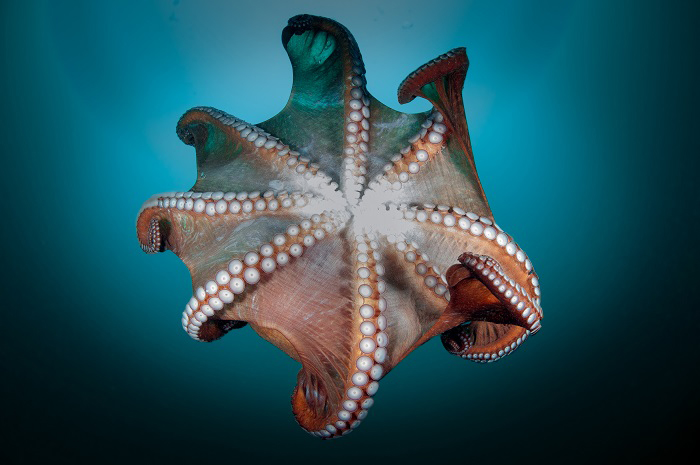

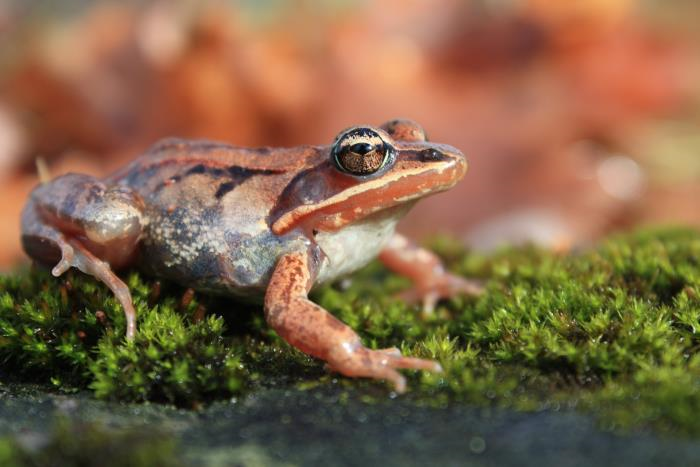

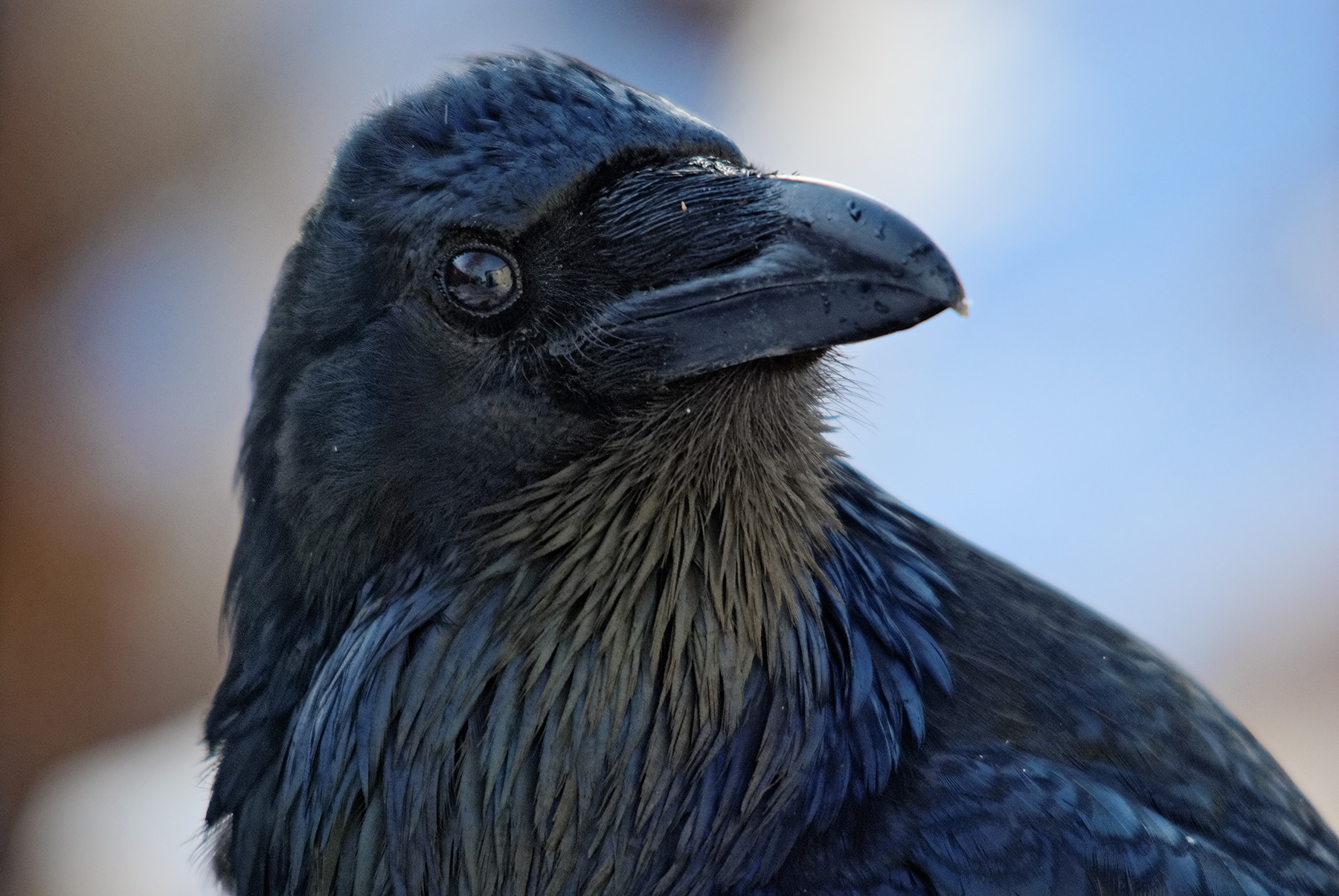
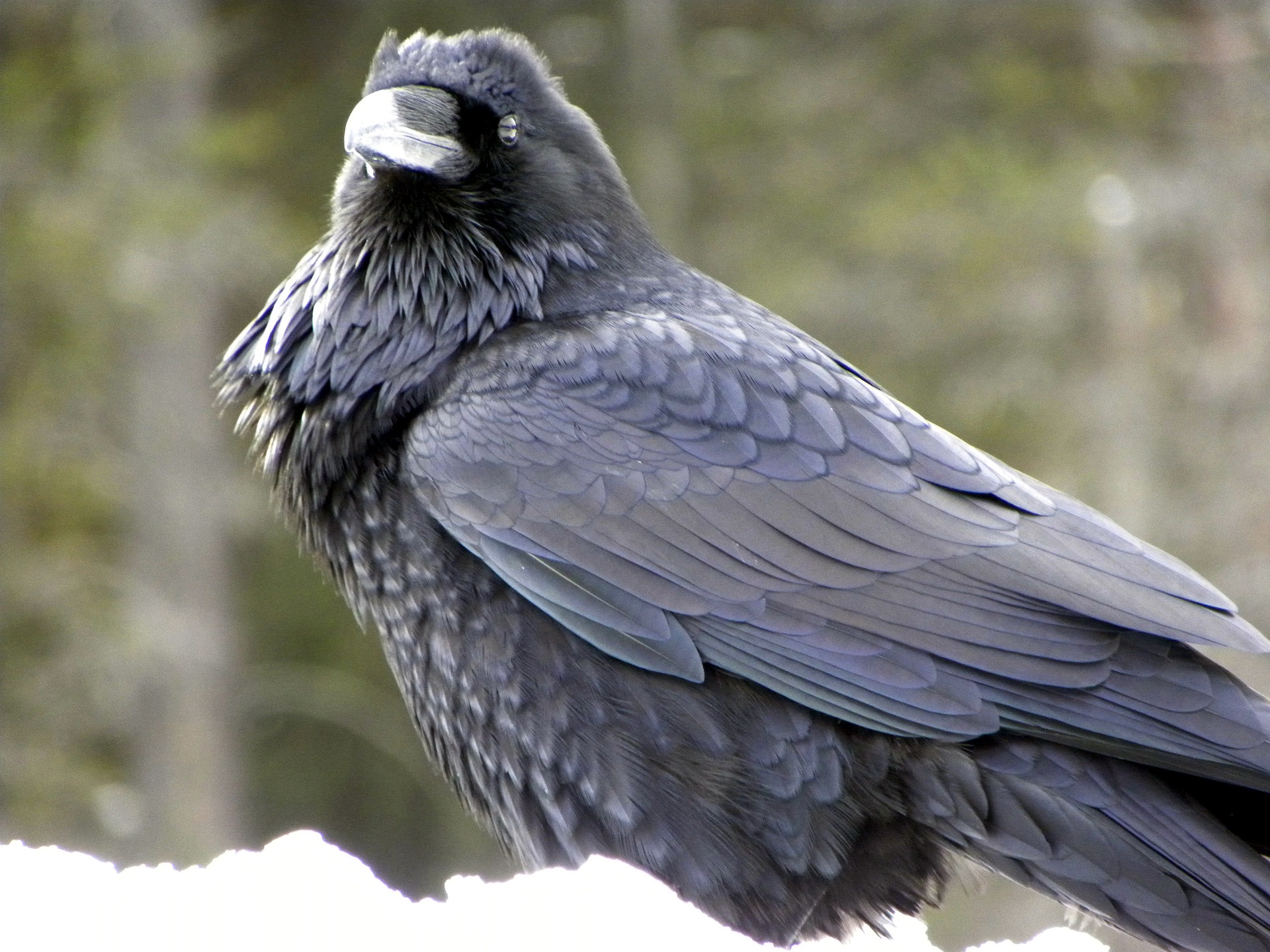
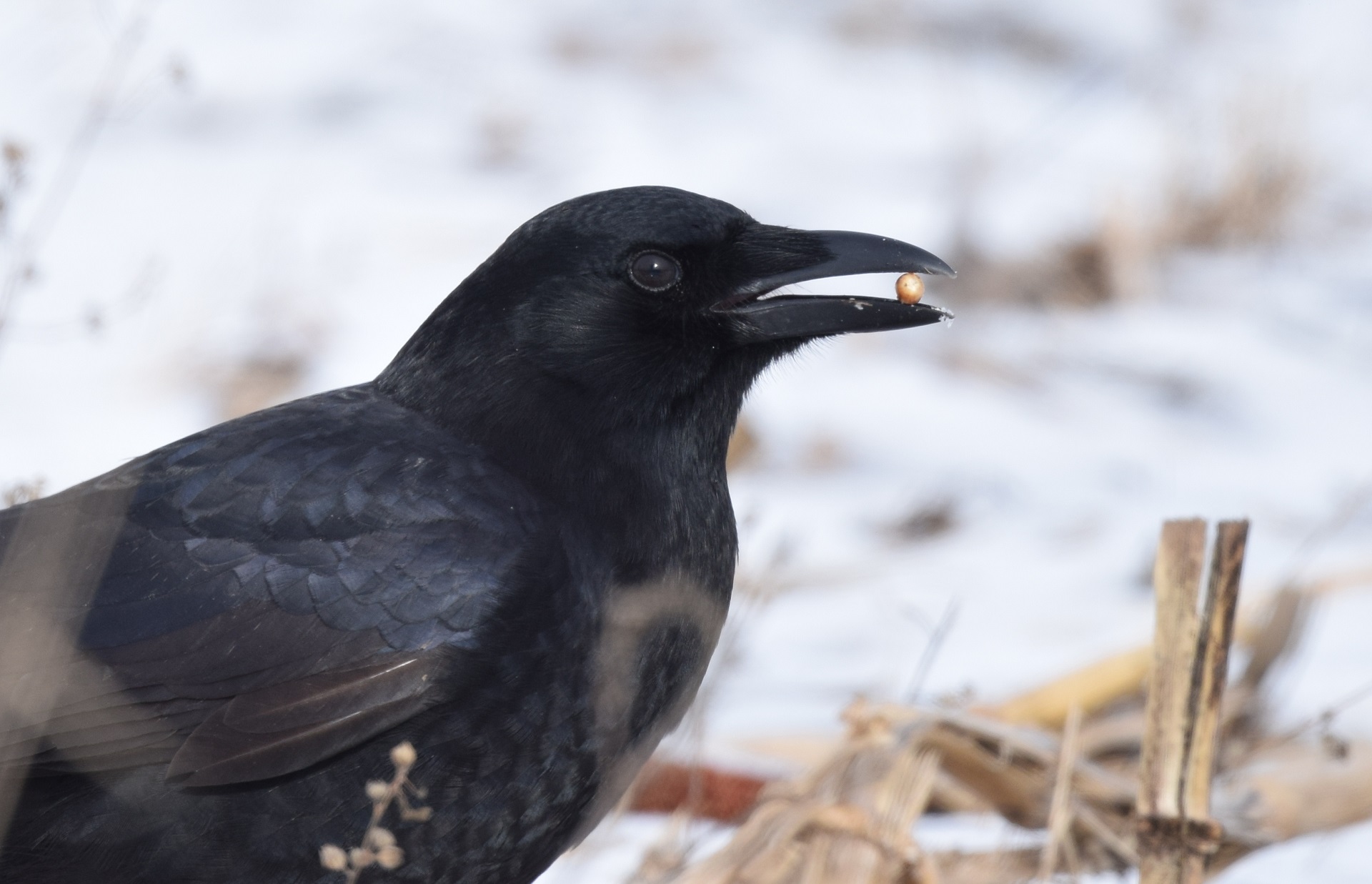
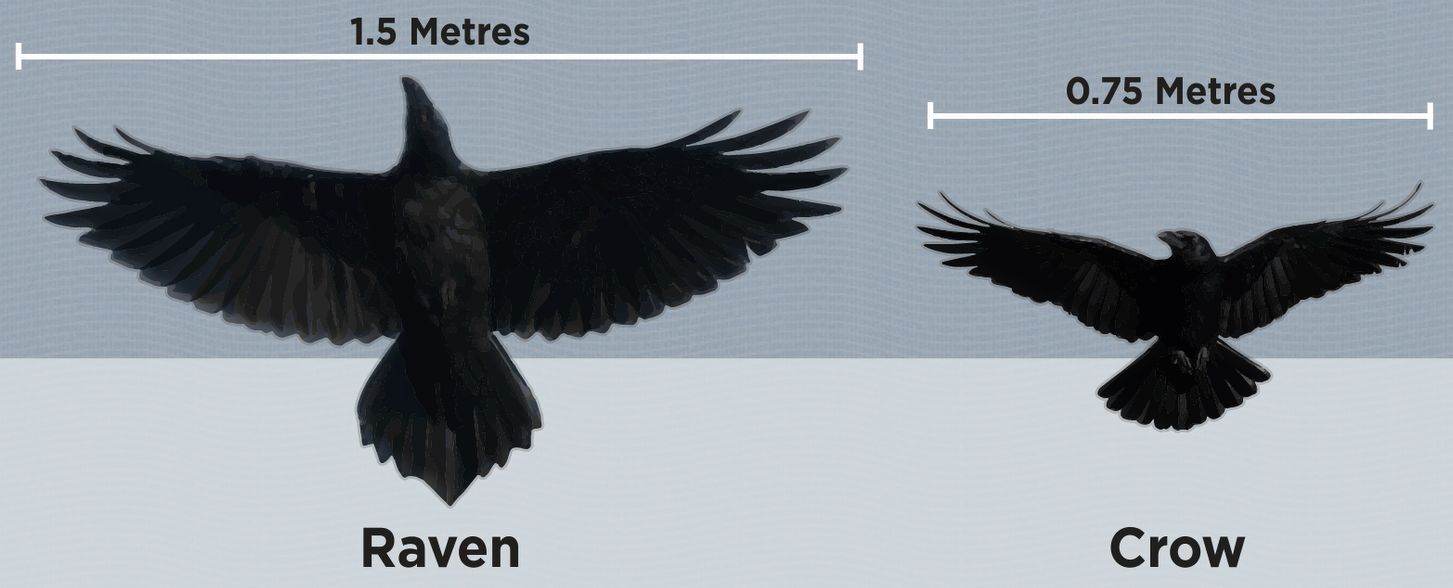
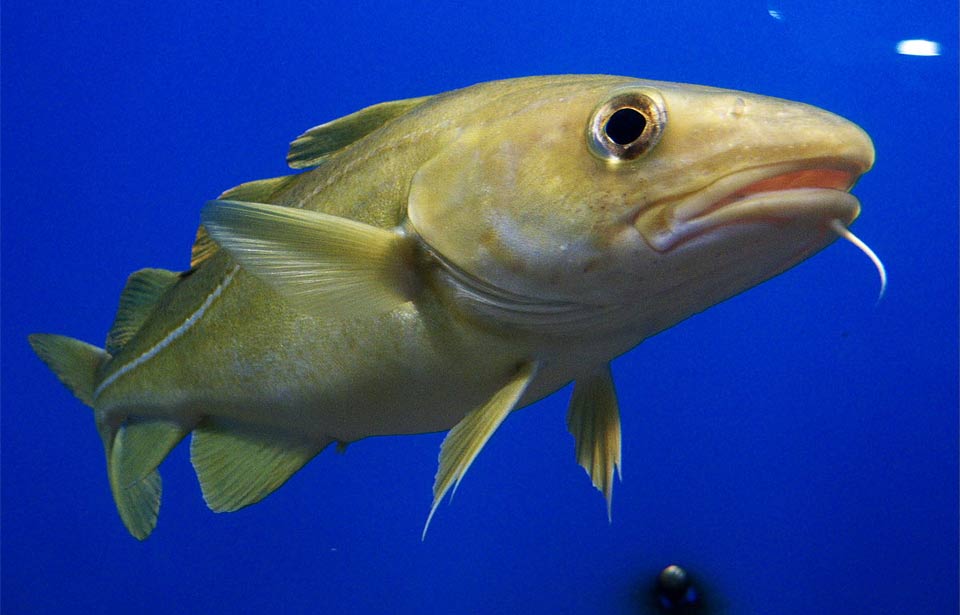
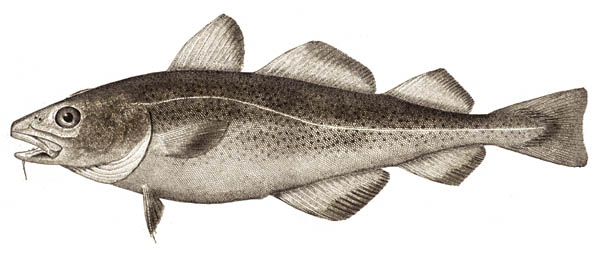 The Atlantic Cod (Gadus morhua) is a medium to large saltwater fish: generally averaging two to three kilograms in weight and about 65 to 100 centimetres in length, the largest cod on record weighed about 100 kg and was more than 180 cm long! Individuals living closer to shore tend to be smaller than their offshore relatives, but male and female cod are not different in size, wherever they live.
The Atlantic Cod (Gadus morhua) is a medium to large saltwater fish: generally averaging two to three kilograms in weight and about 65 to 100 centimetres in length, the largest cod on record weighed about 100 kg and was more than 180 cm long! Individuals living closer to shore tend to be smaller than their offshore relatives, but male and female cod are not different in size, wherever they live.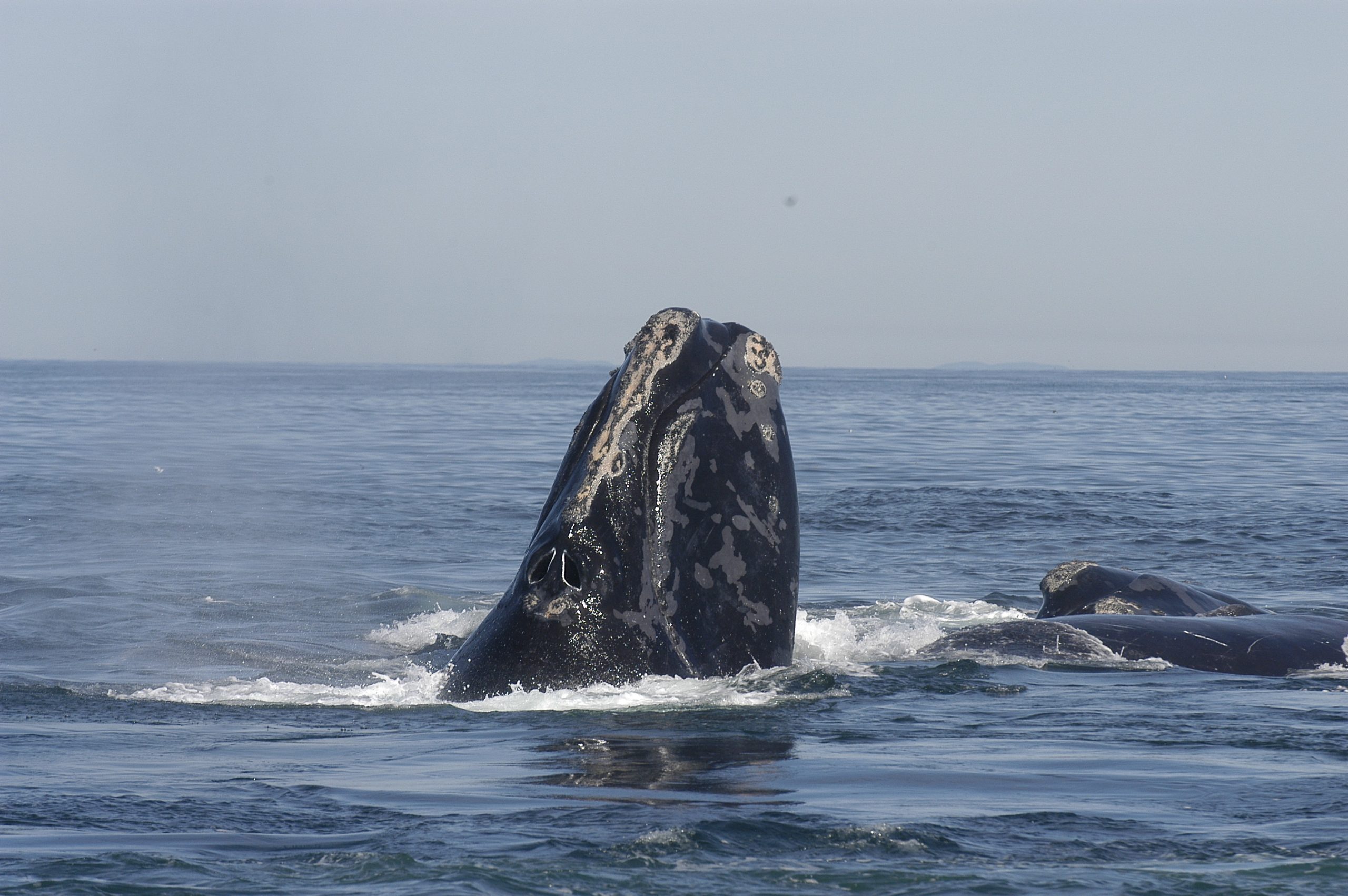
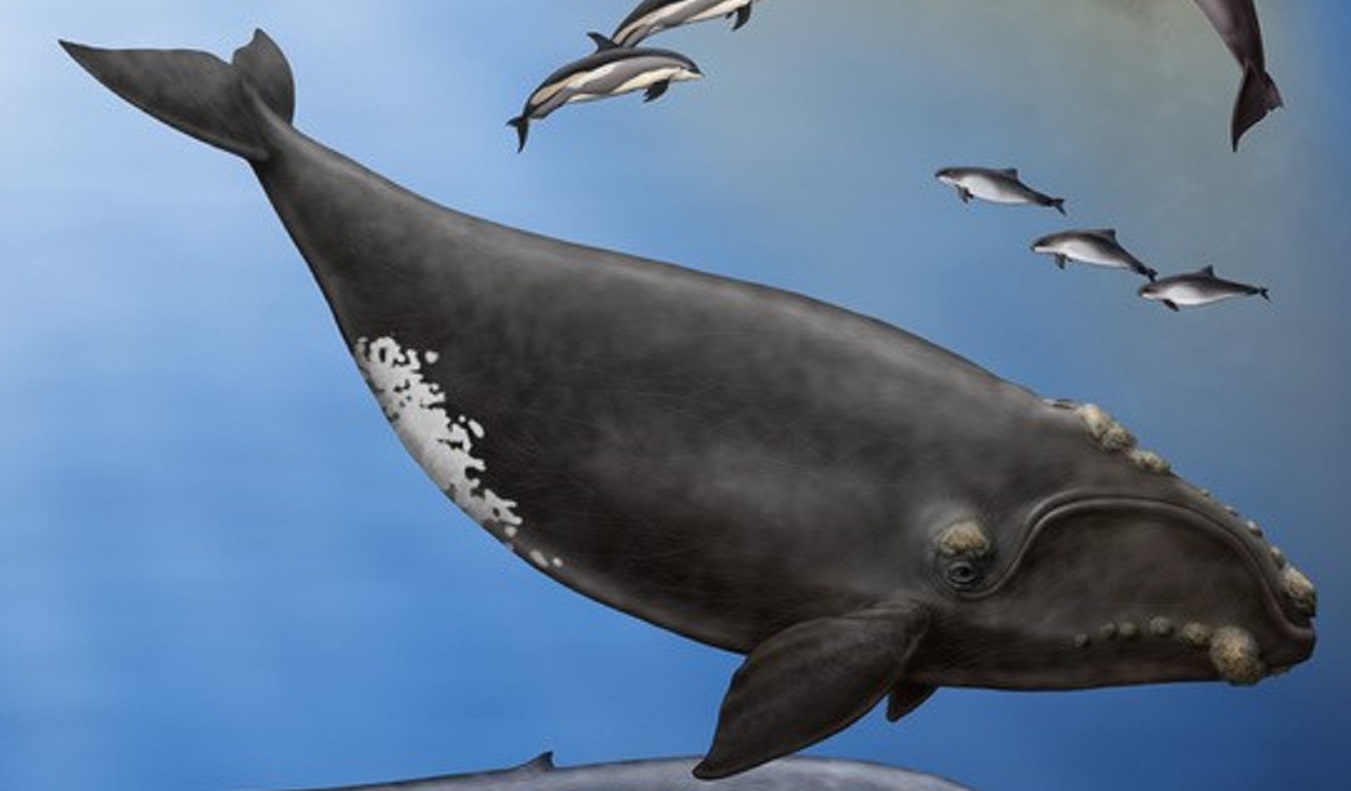 The North Atlantic Right Whale (Eubalæna glacialis) is one of the rarest of the large whales. It can weigh up to 63,500 kilograms and measure up to 16 metres. That’s the length of a transport truck and twice the weight! Females tend to be a bit larger than males – measuring, on average, one metre longer. Considering its weight, it’s fairly short, giving it a stocky, rotund appearance. Its head makes up about a fourth of its body length, and its mouth is characterized by its arched, or highly curved, jaw. The Right Whale’s head is partially covered in what is called callosities (black or grey raised patches of roughened skin) on its upper and lower jaws, and around its eyes and blowhole. These callosities can appear white or cream as small cyamid crustaceans, called “whale lice”, attach themselves to them. Its skin is otherwise smooth and black, but some individuals have white patches on their bellies and chin. Under the whale’s skin, a blubber layer of sometimes more than 30 centimetres thick helps it to stay warm in the cold water and store energy. It has large, triangular flippers, or pectoral fins. Its tail, also called flukes or caudal fins, is broad (six m wide from tip to tip!), smooth and black. That’s almost the same size as the Blue Whale’s tail, even though Right Whales are just over half their size. Unlike most other large whales, it has no dorsal fin.
The North Atlantic Right Whale (Eubalæna glacialis) is one of the rarest of the large whales. It can weigh up to 63,500 kilograms and measure up to 16 metres. That’s the length of a transport truck and twice the weight! Females tend to be a bit larger than males – measuring, on average, one metre longer. Considering its weight, it’s fairly short, giving it a stocky, rotund appearance. Its head makes up about a fourth of its body length, and its mouth is characterized by its arched, or highly curved, jaw. The Right Whale’s head is partially covered in what is called callosities (black or grey raised patches of roughened skin) on its upper and lower jaws, and around its eyes and blowhole. These callosities can appear white or cream as small cyamid crustaceans, called “whale lice”, attach themselves to them. Its skin is otherwise smooth and black, but some individuals have white patches on their bellies and chin. Under the whale’s skin, a blubber layer of sometimes more than 30 centimetres thick helps it to stay warm in the cold water and store energy. It has large, triangular flippers, or pectoral fins. Its tail, also called flukes or caudal fins, is broad (six m wide from tip to tip!), smooth and black. That’s almost the same size as the Blue Whale’s tail, even though Right Whales are just over half their size. Unlike most other large whales, it has no dorsal fin.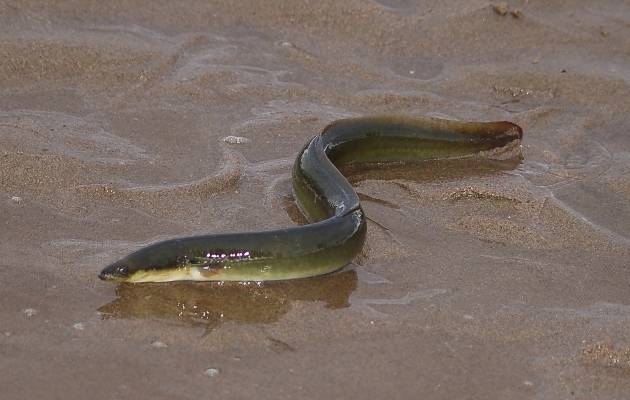
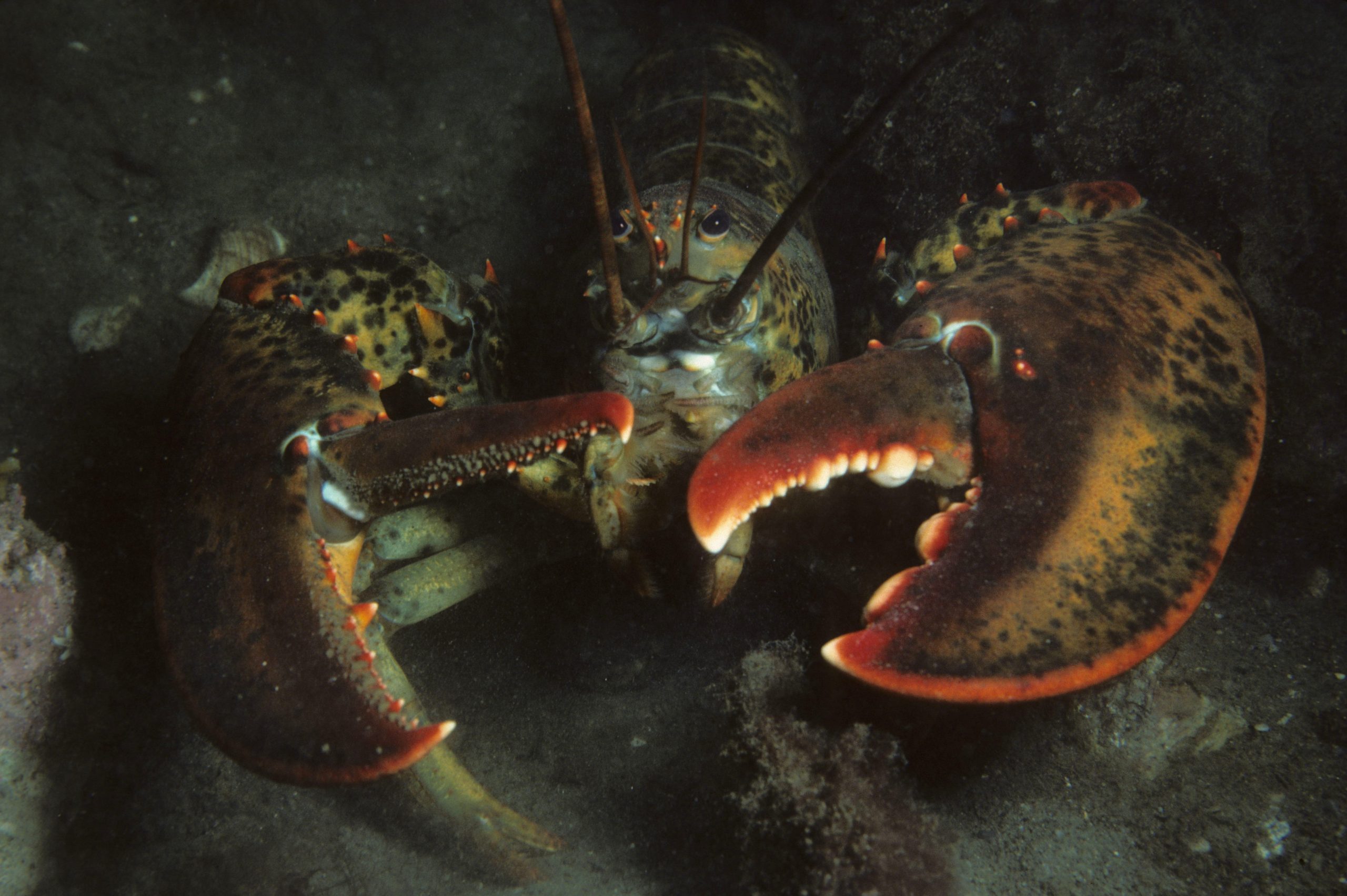
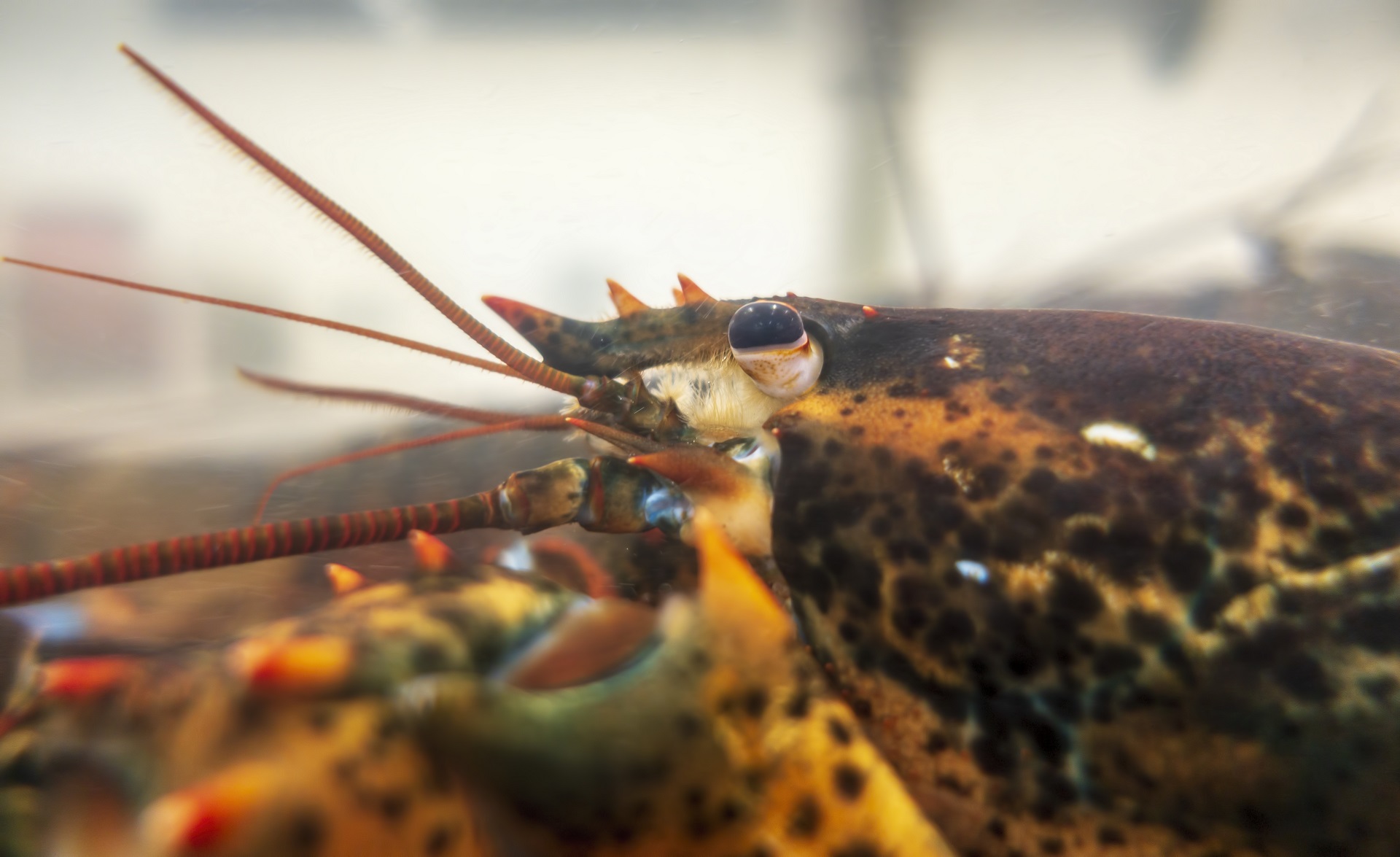
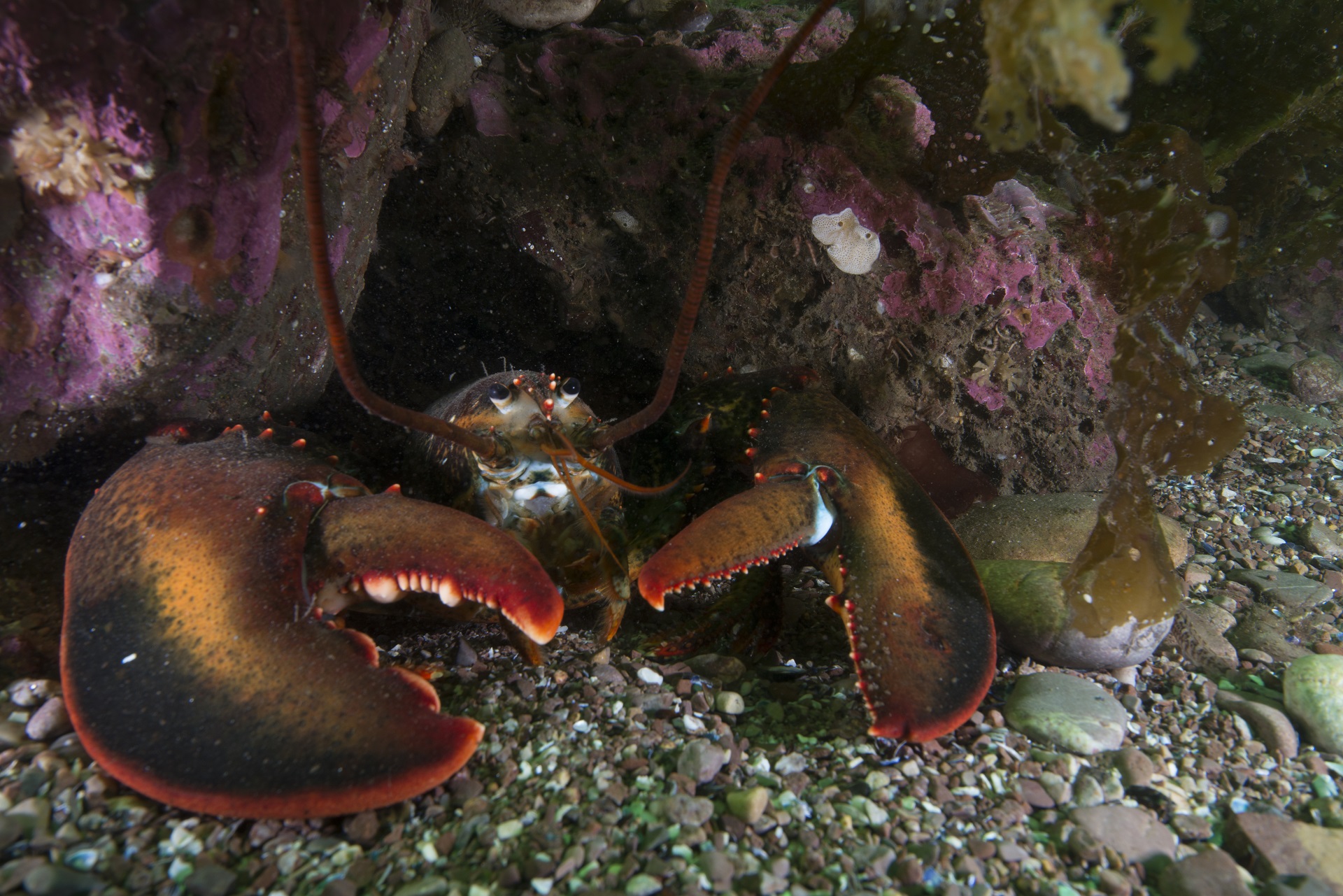
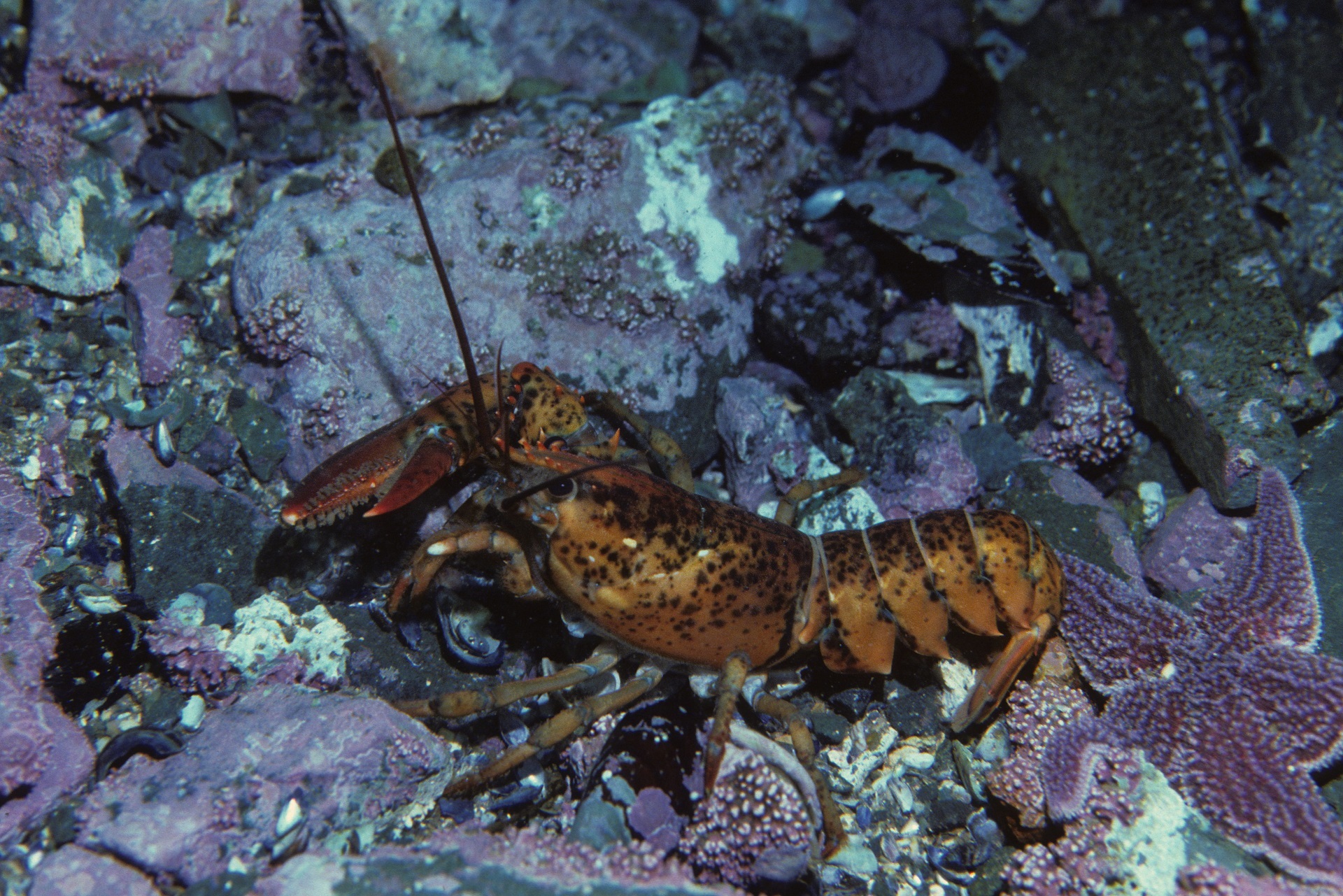
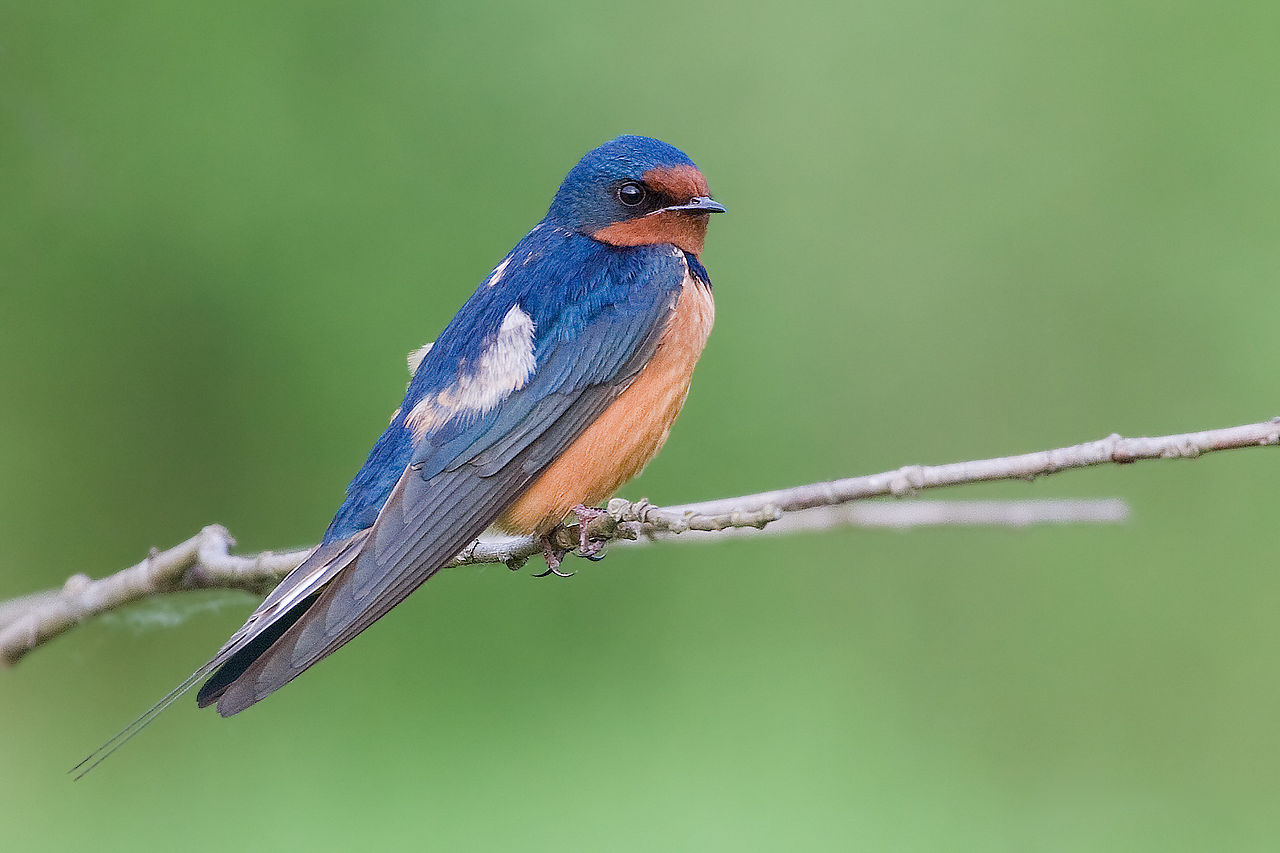

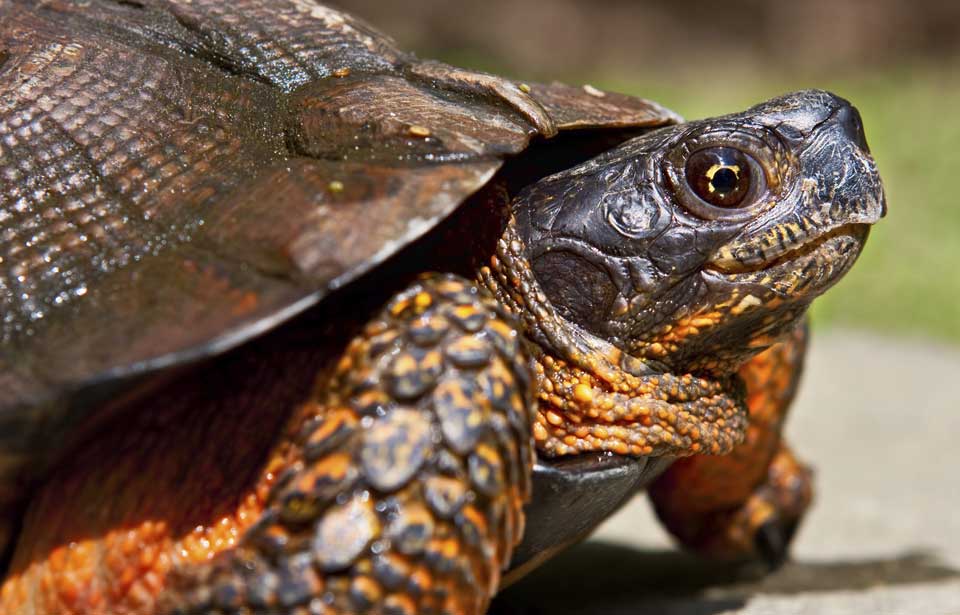
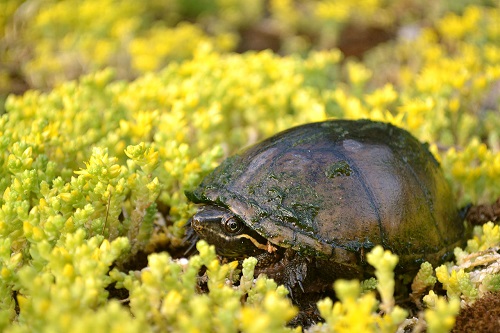
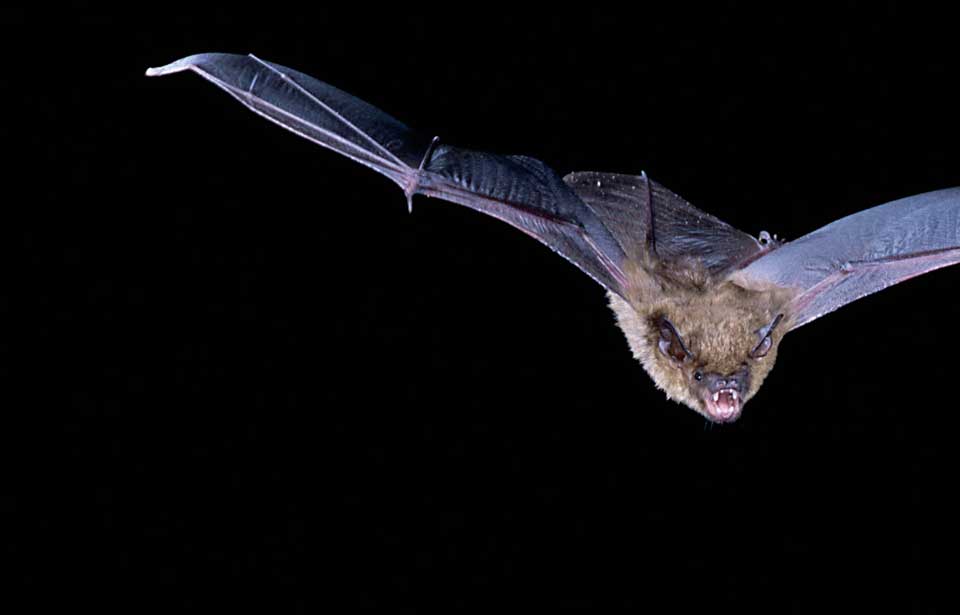
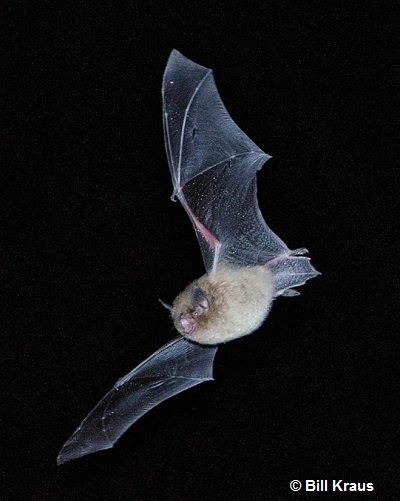

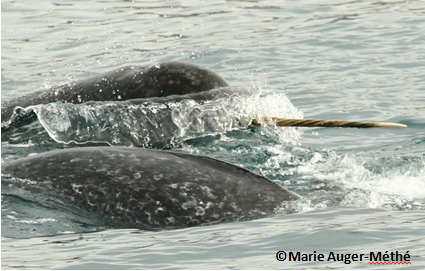
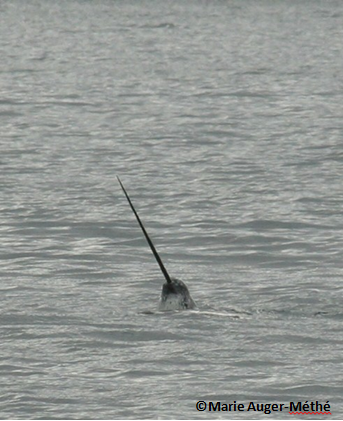
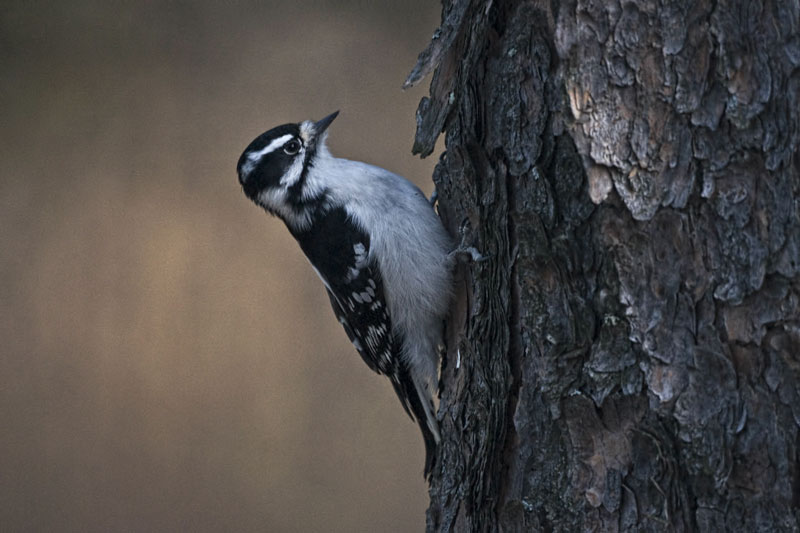

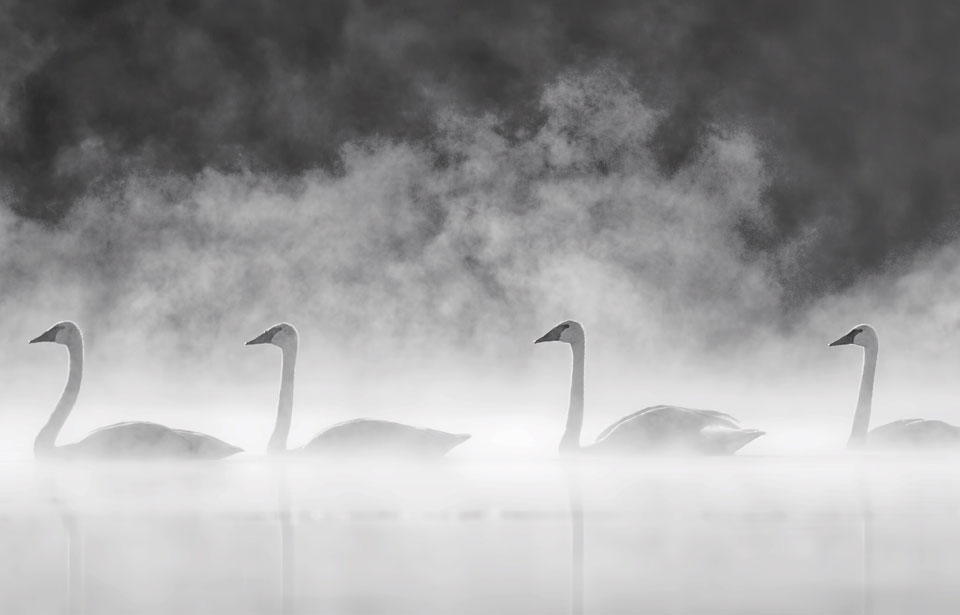
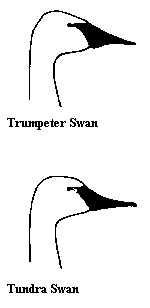 Adult Trumpeter Swans Cygnus buccinator are large birds with white feathers and black legs and feet. The feathers of the head and the upper part of the neck often become stained orange as a result of feeding in areas rich in iron salts. The lack of colour anywhere on the swans’ bodies distinguishes them from other white species of waterfowl, such as snow geese, which have black wing tips.
Adult Trumpeter Swans Cygnus buccinator are large birds with white feathers and black legs and feet. The feathers of the head and the upper part of the neck often become stained orange as a result of feeding in areas rich in iron salts. The lack of colour anywhere on the swans’ bodies distinguishes them from other white species of waterfowl, such as snow geese, which have black wing tips.